Subaru Outback (BR): Manifold Absolute Pressure Sensor
A: REMOVAL
1) Disconnect the ground cable from battery.
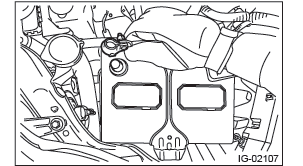
2) Remove the cover (A) and clip (B) from air intake boot assembly.
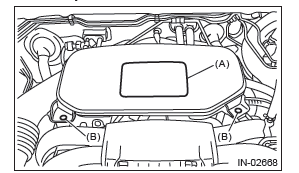
3) Loosen the clamp (A) which connects the air intake boot assembly and air cleaner case.
4) Loosen the clamp (B) which connects the air intake boot assembly and throttle body.
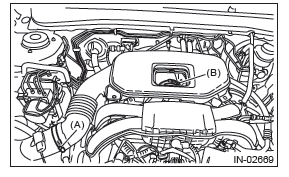
5) Remove the air intake boot from the throttle body, and move it to the left side wheel apron.
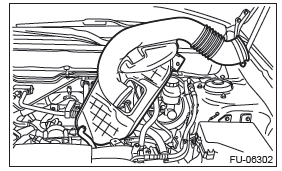
6) Disconnect the connector (A) from the manifold absolute pressure sensor, and remove the manifold absolute pressure sensor from the multi-function duct.
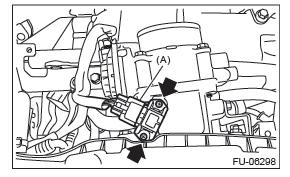
B: INSTALLATION
Install in the reverse order of removal.
NOTE: Use new O-rings.
Tightening torque: 2 N*m (0.2 kgf-m, 1.5 ft-lb)
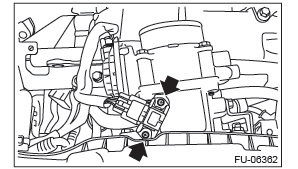
NOTE: Align the clamp hole with the protrusion of the air intake boot assembly.
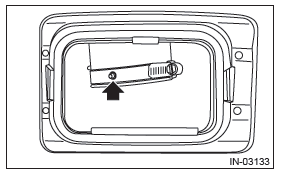
Tightening torque:
Clamp (A), (B)
3 N*m (0.3 kgf-m, 2.2 ft-lb)
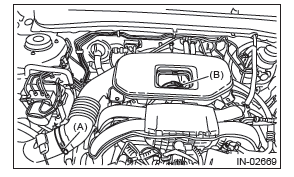
C: INSPECTION
1) Check that the manifold absolute pressure sensor has no deformation, cracks or other damages.
2) Connect dry-cell battery positive terminal to terminal No. 3 and dry-cell battery ground terminal to terminal No. 2, circuit tester ground terminal to terminal No. 2 and the circuit tester positive terminal to terminal No. 1.
NOTE:
- Use new dry-cell batteries.
- Using circuit tester, check the voltage of a single dry-cell battery is 1.6 V or more. And also check the voltage of three batteries in series is between 4.8 V and 5.2 V.
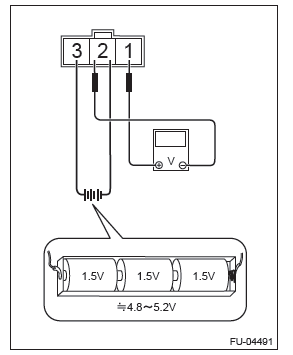
3) Connect the Mighty Vac to the pressure port (A) of manifold absolute pressure sensor.
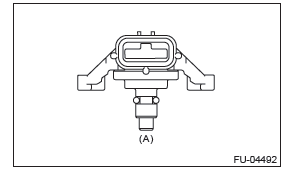
4) Check the voltage when generating vacuum and positive pressure using Mighty Vac.
CAUTION: Do not apply vacuum of less than -88 kPa (-0.9 kgf/cm2, -12.8 psi). Doing so may damage the manifold absolute pressure sensor.
NOTE: When vacuum occurs at the pressure port of manifold absolute pressure sensor, the voltage will drop from the value as in step 3). When positive pressure occurs, on the other hand, the voltage will rise.
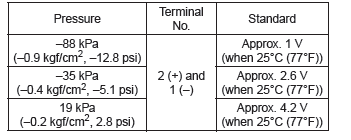
EGR Valve
A: REMOVAL
1) Disconnect the ground cable from battery.
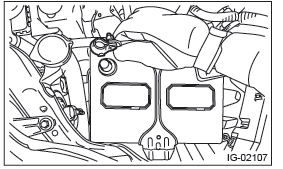
2) Remove the multi-function duct assembly.
3) Remove the EGR valve from the multi-function duct assembly.
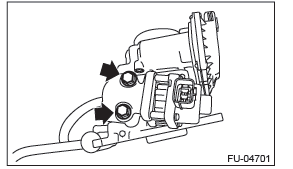
B: INSTALLATION
Install in the reverse order of removal.
NOTE: Use a new gasket.
Tightening torque: 19 N*m (1.9 kgf-m, 14.0 ft-lb)
C: INSPECTION
1) Check that the EGR valve has no deformation, cracks or other damages.
2) Measure the resistance between EGR valve terminals.
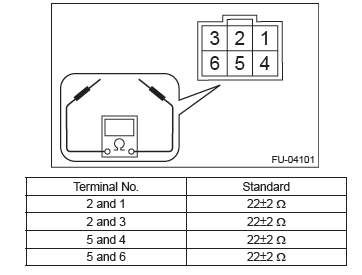
Fuel Injector
A: REMOVAL
1) Release the fuel pressure.
2) Disconnect the ground cable from battery.
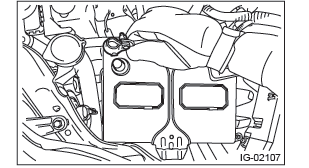
3) Open the fuel filler lid and remove the fuel filler cap.
4) Remove the intake manifold.
5) Remove the bolts securing the fuel gallery to intake manifold.
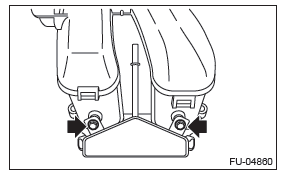
6) Remove the fuel injector while lifting up the fuel gallery.
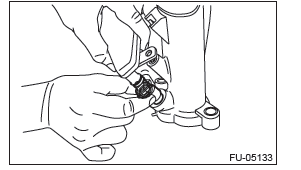
B: INSTALLATION
Install in the reverse order of removal.
NOTE: Use new O-rings, rubbers and seal rings.
Tightening torque: 19 N*m (1.9 kgf-m, 14.0 ft-lb)
C: INSPECTION
1) Check that the fuel injector has no deformation, cracks or other damages.
2) Measure the resistance between fuel injector terminals.
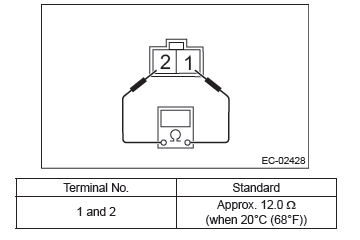
Variable Valve Lift Diagnosis Oil Pressure Switch
A: REMOVAL
1) Disconnect the ground cable from battery.
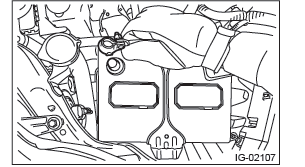
2) Remove the cover (A) and clip (B) from air intake boot assembly.
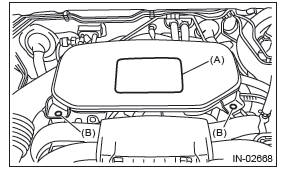
3) Loosen the clamp (A) which connects the air intake boot assembly and air cleaner case.
4) Loosen the clamp (B) which connects the air intake boot assembly and throttle body.
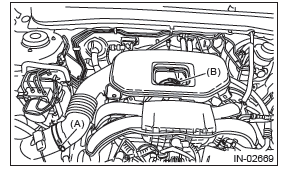
5) Remove the air intake boot from the throttle body, and move it to the left side wheel apron.
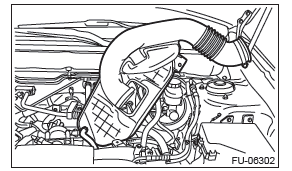
6) Disconnect the connector from the variable valve lift diagnosis oil pressure switch.
7) Remove the variable valve lift diagnosis oil pressure switch.
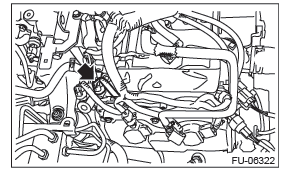
B: INSTALLATION
Install in the reverse order of removal.
NOTE: Apply liquid gasket to the variable valve lift diagnosis oil pressure switch threads.
Liquid gasket: THREE BOND 1324 (Part No. 004403042) or equivalent
Tightening torque: 17 N*m (1.7 kgf-m, 12.5 ft-lb)
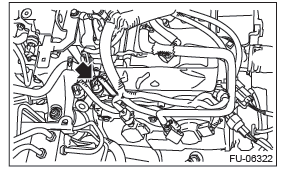
NOTE: Align the clamp hole with the protrusion of the air intake boot assembly.
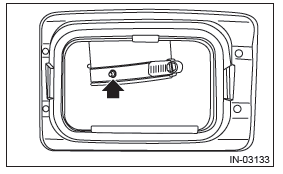
Tightening torque:
Clamp (A), (B)
3 N*m (0.3 kgf-m, 2.2 ft-lb)
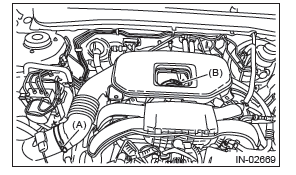
C: INSPECTION
1) Check that the variable valve lift diagnosis oil pressure switch does not have deformation, cracks or damage.
2) Check the variable valve lift diagnosis oil pressure switch installation portion for oil leakage and oil seepage.

